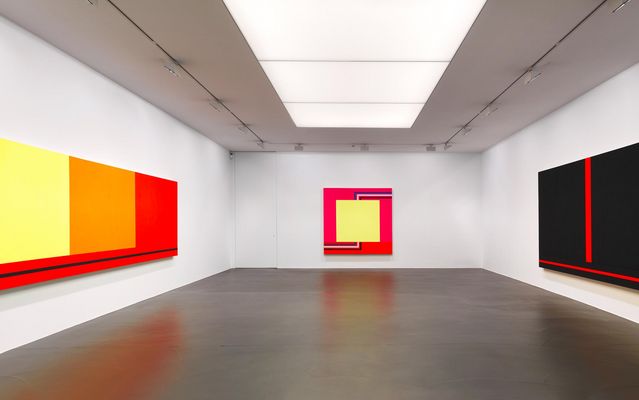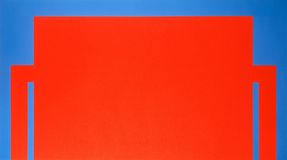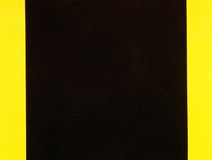
Peter Halley was born in 1953 in New York. He began his formal training at Phillips Academy in Andover, Massachusetts, from which he graduated in 1971. During his studies, Peter Halley read Josef Albers’s Interaction of Color (1981), which would influence him throughout his career.
From 1973 to 1974 Halley lived in New Orleans, absorbing the strong cultural influences of the city. He began using commercial materials in his art and first became acquainted with the writings of earthwork artist Robert Smithson. In 1975 Peter Halley graduated from Yale University, New Haven, with a degree in art history. Afterwards returning to New Orleans, where he received an MFA in painting from the University of New Orleans in 1978. His first solo exhibition took place at the Contemporary Art Center, New Orleans, that same year.
In 1978 Halley spent a semester teaching art at the University of Louisiana, Lafayette, continuing teaching throughout his career. Halley moved back to New York in 1980, having his first solo exhibition in the city at PS122 Gallery. At this time, Halley was drawn to the pop themes and social issues addressed in New Wave music. Being inspired by New York’s urban environment, Halley set out to use the language of geometric abstraction to describe the actual geometricized space around him. He also began his iconic use of fluorescent Day-Glo paint. In 1984, Peter Halley started to exhibit with the International With Monument gallery, becoming closely associated with the organization and its artists. These exhibited conceptually rigorous work in a market-savvy, coolly presented space that stood in stark contrast to the bohemian, Neo-Expressionist flair of the East Village art scene at the time.
In 1986, an exhibition of four artists from International With Monument at the Sonnabend Gallery in New York heralded the group’s growing success. By the late 1980s, Halley was exhibiting with prominent galleries in the United States and Europe. In 1989, an exhibition of his paintings traveled to the Museum Haus Esters, Krefeld, Germany; Maison de la culture et de la communication de Saint-Étienne, France; and Institute of Contemporary Arts, London. From 1991 to 1992, a retrospective toured Europe, with presentations at the CAPC Musée d’art contemporain de Bordeaux, France; Musée d’art contemporain, Lausanne, Switzerland; Museo nacional centro de arte Reina Sofía, Madrid; and Stedelijk Museum, Amsterdam. In 1992, the Des Moines Art Center hosted his first solo exhibition at a U.S. museum.
Halley became interested in French post-structuralist writers, including Jean Baudrillard, Guy Debord, Michel Foucault, and Paul Virillio, while developing his visual language. All these writers shared Halley’s concern with the character of social spaces in a post-industrial society. In 1981, he published his first essay “Beat, Minimalism, New Wave, and Robert Smithson” in Arts, publishing eight of his essays before the decade’s end. After returning to New York, Halley helped define the Neo-Geo movement alongside Ashley Bickerton and Philip Taaffe, developing themes meant to critique the utopian vision of avant-garde idealists and the narratives produced by various cultural authorities. In 1988, the artist’s writings were anthologized in Collected Essays, 1981–1987, and again in 1997 in a second anthology, Recent Essays, 1990–1996.
In the mid-1990s, Halley began to produce site-specific installations for museums, galleries, and public spaces. These characteristically brought together a range of imagery and mediums, including paintings, wall-size flowcharts, and digitally generated wallpaper prints. Halley has executed permanent installations at the Dallas/Fort Worth International Airport, Texas, and the Gallatin School of Individualized Study at New York University. In 2011, his installation of digital prints Judgment Day was installed in the Palazzo Bembo in Venice as a part of the exhibition Personal Structures during the Venice Biennale.
Halley has taught at the School of Visual Arts, New York; the University of California, Los Angeles; and Columbia University. He subsequently served as the Director of Graduate Studies in Painting and Printmaking at the Yale University School of Art from 2002 to 2011. From 1996 to 2006 he also published index magazine. Halley lives and works in New York.
Peter Halley
Red Cell, 1989
Acrylic, Day-Glo acrylic, and Roll-a-Tex on canvas
169 x 302.5 x 9.5 cm 66 1/2 x 119 x 3 3/4 in.
Peter Halley
Black Cell with Yellow Background, 1984
Acrylic, Day-Glo acrylic and Roll-a-Tex on canvas
122 x 163 x 8 cm 48 x 64 x 3 1/8 in.
Peter Halley
Three Sectors, 1986
Acrylic and Day-Glo acrylic, and Roll-a-Tex on canvas
148 x 488 cm


